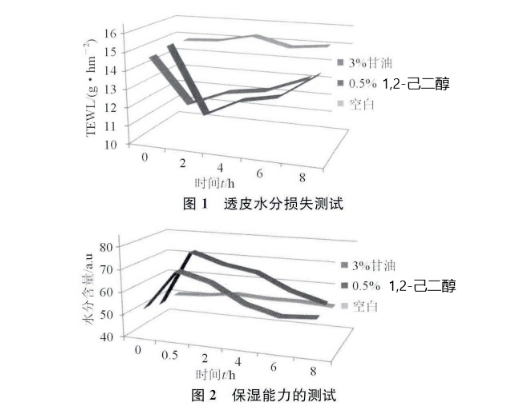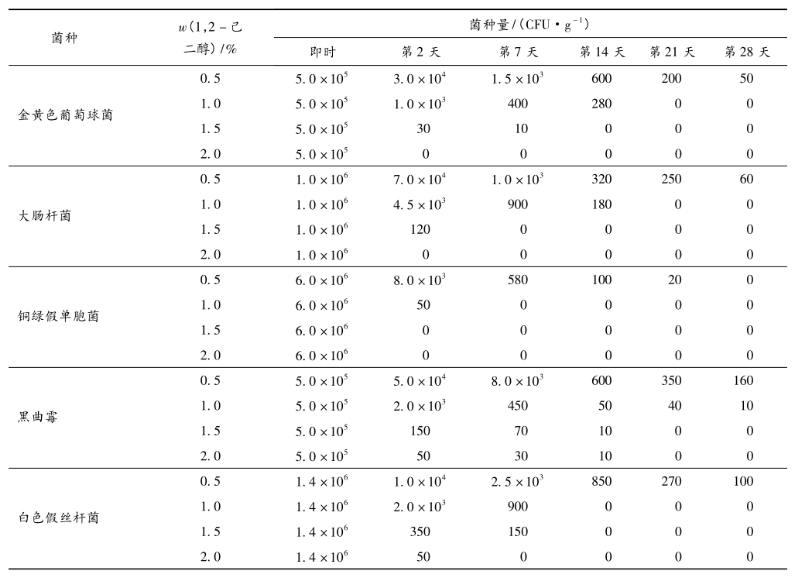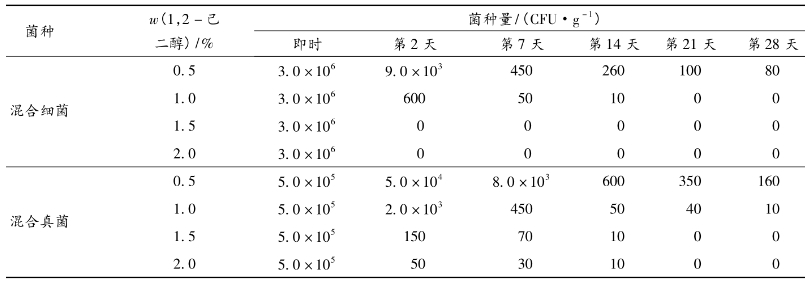Application of 1, 2-hexanediol in cosmetics
1, 2-hexadiol is a kind of polyol, the appearance is colorless and transparent, has a mild sweet fragrance, as a cosmetic raw material, has a good bactericidal and moisturizing effect (antibacterial mechanism: can enter the cell membrane of microorganisms, and then destroy the integrity of the cell membrane, let the cell fluid penetrate out, and finally lead to the death of microorganisms), while no sensitive side effects on human skin.

1, 2-hexadiol structural formula
1, 2-hexadiol has good miscibility with other substances (easily soluble in water, ethanol, etc.), and can be well combined with other anti-microbial substances to play an antibacterial and anti-sensitive role. In addition, there are also reports that 1, 2-hexanediol is used in deodorant, which has obvious deodorizing and antiperspirant effect on human skin, and is gentle to the skin.
It is precisely because 1, 2-hexadiol has antibacterial effects and is not on the list of preservatives that it is often used as an alternative preservative in non-preservative systems.
Step 1 Moisturize
Kong Qiuchan et al studied the moisturizing effect of 1, 2-hexanediol, transdermal water loss test and moisturizing ability test results as shown in Figure 1 and Figure 2, 0.5% of 1, 2-hexanediol moisture is slightly better than 3.0% glycerin, has a very good moisturizing effect, and 1, 2-hexanediol viscosity is lower than glycerin, used in the product has a more suitable skin feeling.

2, alternative anticorrosion – single antibacterial
Kong Qiuchan et al studied the antiseptic effect of 1, 2-hexadiol alone. As shown in Table 1, 1, 2-hexanediol has a good inhibitory effect on Staphylococcus aureus, Escherichia coli and Pseudomonas aeruginosa. When the mass fraction of 1, 2-hexanediol is 2.0%, all the three bacteria have been killed on the second day. However, the killing ability of 1, 2-hexanediol against P. albicans and Aspergillus Niger was obviously weak. When the mass fraction of 1, 2-hexanediol was 2.0%, it could be completely killed on the 7th and 21st day, respectively.
Table 1, 2-hexadiol corrosion challenge test


The anticorrosive challenge test results of 1, 2-hexanediol on mixed bacteria and mixed fungi in water are listed in Table 2. When the mass fraction of 1, 2-hexanediol is 1.5%, it has shown excellent anticorrosive ability on mixed bacteria, and the inoculated bacteria can be completely killed on the second day. Similar to the test results of single inoculation of Aspergillus Niger, 1, 2-hexadiol has a weak anti-corrosion ability to the mixed fungi, and can completely kill the mixed fungi on the 21st day when its mass fraction is 2.0%.
Mixed bacteria: Staphylococcus aureus, Escherichia coli and pseudomonas aeruginosa were mixed inoculation, and the number of inoculation of the three bacteria was maintained at the same order of magnitude.
Mixed fungi: mixed inoculation of Aspergillus Niger and Pseudomonas albicans, and the number of inoculations of the two bacteria remained at the same order of magnitude.
Table 21, 2-hexadiol preservative challenge test for mixed bacteria and mixed fungi

3, alternative anticorrosion – compound antibacterial
Since 1, 2-hexanediol has a good inhibitory effect on bacteria and a slightly weak inhibitory effect on fungi, in order to achieve better antibacterial effect, it needs to be combined with other alternative anti-corrosion ingredients, such as p-hydroxyacetophenone, 1, 2-pentanediol, octyl glycol, ethylhexyl glycerol, etc.
As shown in Table 3, No. 3 and No.5 refer to the mass ratio of 1, 2-hexadiol to p-hydroxyacetophenone of 0.5:0.5 and 0.8:0.4, respectively. The results in Table 3 show that in the emulsion, gel and cream products, except for a small amount of bacteria remaining on the second day when the emulsion is used in the combination scheme No. 3, the remaining bacteria species are completely killed, and the anti-corrosion effect is very obvious. Moreover, with the decrease of water content and water activity in the formula, the growth rate of bacteria will be reduced, and the anti-corrosion effect will be enhanced.
Table 3 Anticorrosion challenge test of the composite scheme

Kong Qiuchan et al studied the antiseptic effect of the combination of 1, 2-hexadiol and propylene glycol.
Combination scheme 1# : 0.5%, 2-hexanediol combined with 0.2% propylene glycol;
Combination scheme 2# : 0.5%, 1, 2-hexanediol combined with 0.3% propylene glycol;
Combination scheme 3# : 0.8%, 1, 2-hexanediol combined with 0.2% propylene glycol;
Combination scheme 4# : 0.8%, 1, 2-hexanediol combined with 0.3% propylene glycol;
Table 4 Corrosion challenges of different combinations Test number of colonies (cfu/g)- water agent

As shown in Table 4, in the water products that are most likely to breed microorganisms, the use of combination scheme 3# can approach the anti-corrosion effect of 1.5% of 1, 2-hexanediol alone (therefore, the use of combination scheme 3# for ordinary skin care products can be used); In the combination scheme, although 1, 2-hexanediol played a major role in the inhibition of bacterial strains, the addition of propylene glycol significantly improved the anti-corrosion effect of 1, 2-hexanediol.
Summary: 1, 2-hexadiol is a kind of polyol, which has the function of moisturizing and bacteriostatic. In terms of bacteriostasis, 1, 2-hexadiol has a very obvious inhibitory effect on bacteria and yeast, but the inhibitory effect on mold is slightly weak. Therefore, when used as an alternative preservative, 1, 2-hexanediol needs to be used in combination with other ingredients, such as 1, 2-hexanediol and p-hydroxyacetophenone additions of (mass ratio) 0.5:0.5 or 0.8:0.4, 1, 2-hexanediol and propylene glycol additions of (mass ratio) 0.8:0.2 or 0.8: At 0.3, it can pass the anti-corrosion challenge test.

